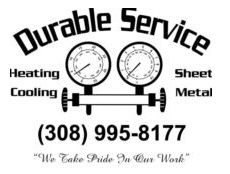Everyone’s always looking to save money on their utility bills, but it turns out there’s a way to lower energy use, even when you’re not even home.
The key is your thermostat. By using automatic schedules, you can help the thermostat plan for your preferred temperatures. You can create a number of automated temperature settings for when you’re at home, away or even when you’re asleep.
With a few simple adjustments, you can enjoy comfy temperatures while keeping more money in your pocket. Here are some ways your thermostat can save you money in the summer:
While at Home
Whenever you’re at home, you want to enjoy a comfortable temperature. For the most part, you probably have your thermostat lower in the summer while you are in the house to appreciate the cool air.
But the most energy-efficient temperatures for the summer is actually around 78 and 80 degrees Fahrenheit. By adjusting things a few degrees, you can stay cool while still keeping your energy bills low.
While Away
When it comes to setting the temperature for whenever you’re gone, it’s advantageous to set the thermostat higher for while they’re gone.
Depending on the local climate or your home’s location, you can set the thermostat to temperatures as high as 88 degrees while no one is home before you adjust it back to the sweet spot of 78-80 degrees once you’re home again. This way, your air conditioning system isn’t working around the clock to cool an empty house.
While Asleep
For a full night’s rest during summer weather, you want your thermostat set at a comfortable temperature. A great place to start is between 68-72 degrees Fahrenheit. You won’t have to worry about getting too hot or too cold when you are trying to get some rest.
Other Strategies for Lowering Energy Use:
- Put in a smart thermostat: Switching to a smart thermostat in the summer helps save money on energy costs since it can plan your temperature adjustments according to your lifestyle and personal preferences. A smart thermostat manages the temperature if you are home or sleeping, while allowing it to get warmer when the house is empty. Using reputed brands and models such as the Lennox iComfort, you are able to adjust settings and schedules through your smartphone, tablet or laptop. Requesting smart thermostat installation in your Holdrege home can be the simplest strategy for maintaining comfortable, yet energy-efficient temperatures even when you aren’t home.
- Upgrade your HVAC system: A new HVAC system is another great option for long-term energy savings. By investing in a more energy-efficient system, you can also count on lower utility bills since more efficient equipment requires less energy to heat and cool your home. Air conditioning installation in Holdrege is only a phone call away, so don’t hesitate to reach out to local pros like Durable Service who can set you up for success.
- Keep up with AC maintenance: Investing in or ignoring regular air conditioning maintenance in Holdrege can have a serious effect on your total monthly energy use. With regular cleaning of the coils, checking for damage and clearing air vents of dust and debris, this can help your HVAC system perform better during day-to-day use.. More efficient operation reduces strain on the unit and lowers operational costs, resulting in lower energy usage and subsequently, smaller bills.
- Replace your air filter regularly: Cleaning or replacing the air filter regularly saves money by keeping airflow as smooth and consistent as possible. When filters are clogged with dirt and debris, your air conditioner will have to work harder, and the added strain may impact the system’s life span and lead to breakdowns.
- Check if you have enough insulation in the attic: Insulation is a crucial component for any energy-efficient home, keeping the hot air outside and the cool air inside through summer. The North American Insulation Manufacturers Association (NAIMA) suggests that homeowners living in southern climates should install at least 13-14 inches of insulation, while colder climates do better with 16-18 inches.
- Check your ductwork: Damage to the ventilation is capable of increasing your energy bills much more than 20 percent, plus it can affect equipment such as your water heater, clothes dryer and other appliances to get into the atmosphere of your home. Watching for signs of leaks and sealing them can help with both these issues.
- Seal all other leaky spots in your home: Sealing up other leaks in your home with caulk, foam sealant or weather-stripping helps keep things cooler during those hot summer days. You should also check for any gaps around windows, doors and even outdoor fixtures. Making time to seal leaks now can help you save a lot over time.

